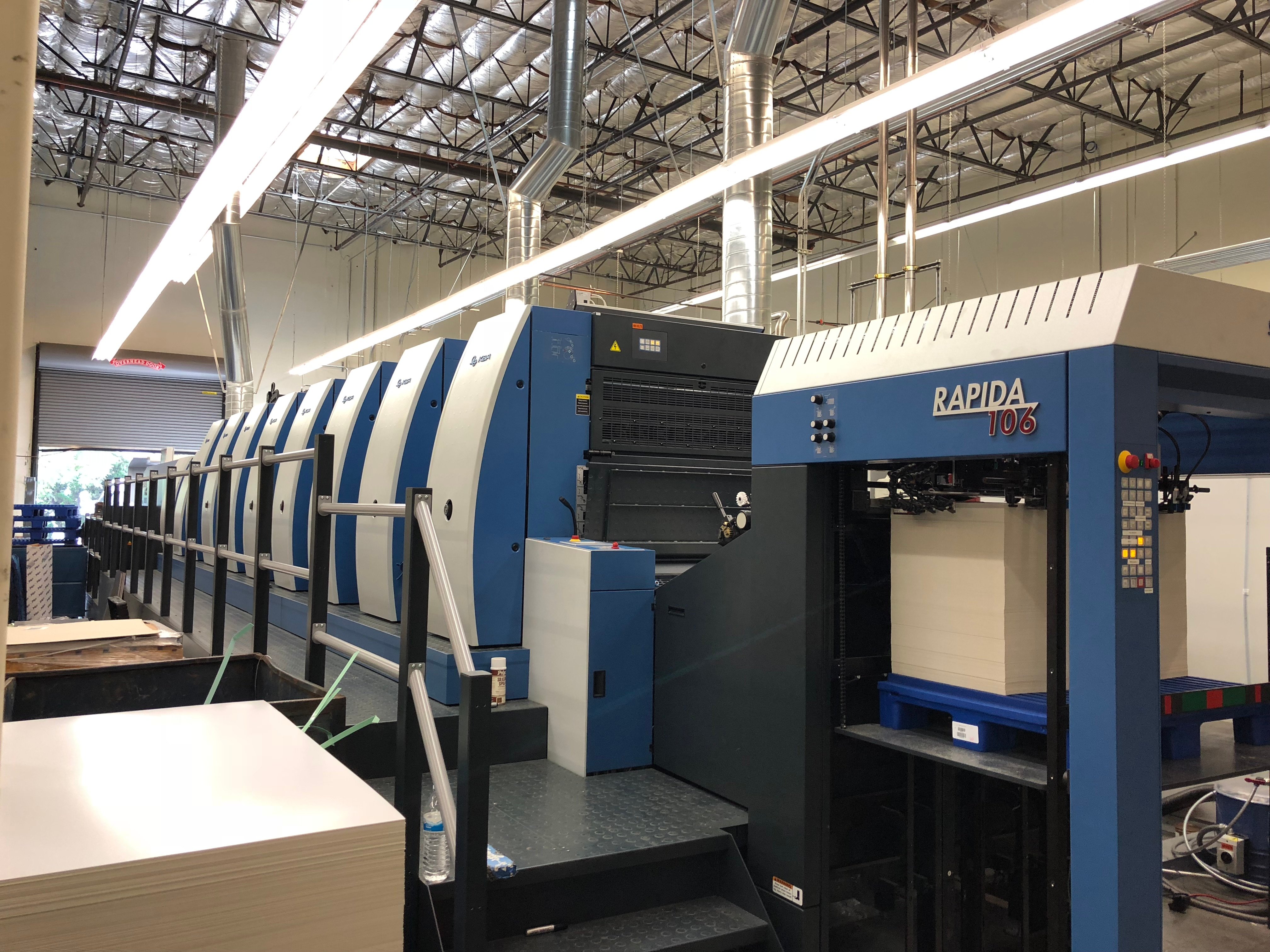litho printing for Catalogs, Flyers, and Pamphlets
litho printing for Catalogs, Flyers, and Pamphlets
Blog Article
A Comprehensive Overview to Comprehending Litho Printing Techniques
The globe of litho printing, a method stemming from the late 18th century, is an interesting blend of background, art, development and scientific research. Keep with us as we journey into the fascinating world of litho printing.
The Historic Evolution of Litho Printing
The historical trajectory of litho printing, an essential innovation in the realm of communication, is a fascinating tale of human resourcefulness. Birthed in the late 18th century by Alois Senefelder, this strategy was originally an economical method of publishing staged jobs. Lithography, stemmed from the Greek words for 'rock' and 'to create', made use of a smooth rock surface area to move photos onto paper. The procedure evolved with the introduction of the rotary press, which substantially raised productivity (litho printing). In the 20th century, the development of offset lithography transformed the market, enabling mass production of high-grade prints. Each phase of litho printing's advancement showcases mankind's ruthless quest of effectiveness and high quality in visual communication.
Translating the Science Behind Litho Printing Inks
Progressing in the expedition of litho printing methods, the emphasis currently shifts to the scientific research behind litho printing inks. The make-up of these inks, their drying procedure, and color mixing strategies develop the backbone of this intricate art type. Recognizing these aspects is important to mastering the craft and attaining the preferred print outcomes.
Structure of Litho Inks
In lithographic printing, the fundamental role of litho inks can not be overstated. Pigments, the color-providing aspects, are carefully ground fragments suspended in the car, a fluid that brings the pigment onto the printing surface area. Each part plays an important component in the last print's quality, making the exact solution of litho inks an elaborate science.
Ink Drying Process
From the make-up of litho inks, attention turns to the fascinating procedure of ink drying out. Two primary approaches are utilized in litho printing: oxidative drying and absorption. Absorption, on the other hand, entails the ink permeating into the paper fibers, which is a faster procedure however can lead to less vivid colors.
Color Combining Methods
While the drying procedure plays a crucial role in litho printing, the science of shade mixing methods holds equivalent importance. The scientific research behind litho printing inks additionally takes into account the transparency of the ink, which influences how colors overlay and mix.
The Art and Layout Elements in Litho Printing
Litho printing breathes life right into art and layout through its special components. The procedure involves producing a picture on a lithographic sedimentary rock plate or steel plate with a smooth surface. The image is then published onto a tool, generally paper, by transferring the ink from the plate. What sets litho printing apart is its capability to reproduce detailed designs with high fidelity, making the outcome virtually the same to the original artwork. This is achieved with using various line strategies such as cross-hatching, hatching, and stippling, which enable a variety of tonal results. Litho printing fits a range of shades, making it possible for artists to develop dynamic and lively prints. This combination of precision and adaptability makes litho printing a recommended selection for many musicians and developers.
Modern Applications of Litho Printing Strategies
Litho printing methods have located considerable use in the contemporary industrial industry. Its influence and relevance continue to expand with view it now the development of new advancements and innovations in the field. This area will discover these contemporary applications and the transformative duty they play in the printing market.
Commercial Litho Printing Makes Use Of
Litho printing remains a crucial part of the commercial sector. High-volume printing tasks, such as the production of books, newspapers, and packaging, rely on litho printing for its capability to provide exceptional picture high quality and expense performance. Litho printing additionally gives a wide shade range, remarkable to that of electronic printing.
Innovations in Litho Printing
Pushing the boundaries of traditional techniques, contemporary improvements have fueled a host of developments in litho printing. These developments have not just boosted the top quality and performance of litho prints but also expanded its application extent. One popular development is digital litho printing, which combines the virtues of digital technology with litho's top quality outcome. This crossbreed model offers faster setup times, lowered waste, and makes it possible for on-demand printing. One more notable development is the intro of ecologically friendly inks. These inks, made from veggie or soy-based services, have actually dramatically minimized the industry's ecological effect. litho printing. Additionally, the advancement of advanced plate modern technology has streamlined the printing procedure, leading to sharper images and boosted color integrity. These advancements underscore the long-lasting significance of litho printing in the modern world.
Checking out the Refine of Litho Printing: Step by Step

Obstacles and Solutions in Contemporary Litho Printing

Despite the precision and tradition that litho printing proudly try this site upholds, it is not without its set of modern challenges. Digital litho printing permits for cost-effective brief runs and very easy modification, resolving the concern of variable information. Therefore, while there are difficulties, the litho printing sector is proactively adjusting to fulfill them head-on, guaranteeing its significance in the future.
Conclusion
To conclude, litho printing, with its rich background and clinical ins and outs, holds a considerable location in the print market. read review As the guide discloses, it's a synthesis of art and modern technology, with contemporary improvements ensuring its relevance. Nonetheless, the market faces challenges that call for ingenious services, with a concentrate on automation and sustainability. The future of litho printing rests on its capability to adapt to these transforming demands, affirming its long-lasting value in an evolving market.

Report this page